Take a Virtual Visit to a National Park

Got a bit of downtime? Take a trip to a national park from wherever you are! Many national park sites across the country offer digital tours and experiences that you can access anytime, anywhere. From digitally diving under the sea to watching the cherry blossom trees bloom, there are countless ways to enjoy a park experience online.
Virtual Tours
Get up close and personal with parks through virtual tours. Learn more about the history of these legendary places and how their protection and preservation is essential in ensuring these sites are enjoyed for generations to come.
Lyndon B. Johnson National Historical Park
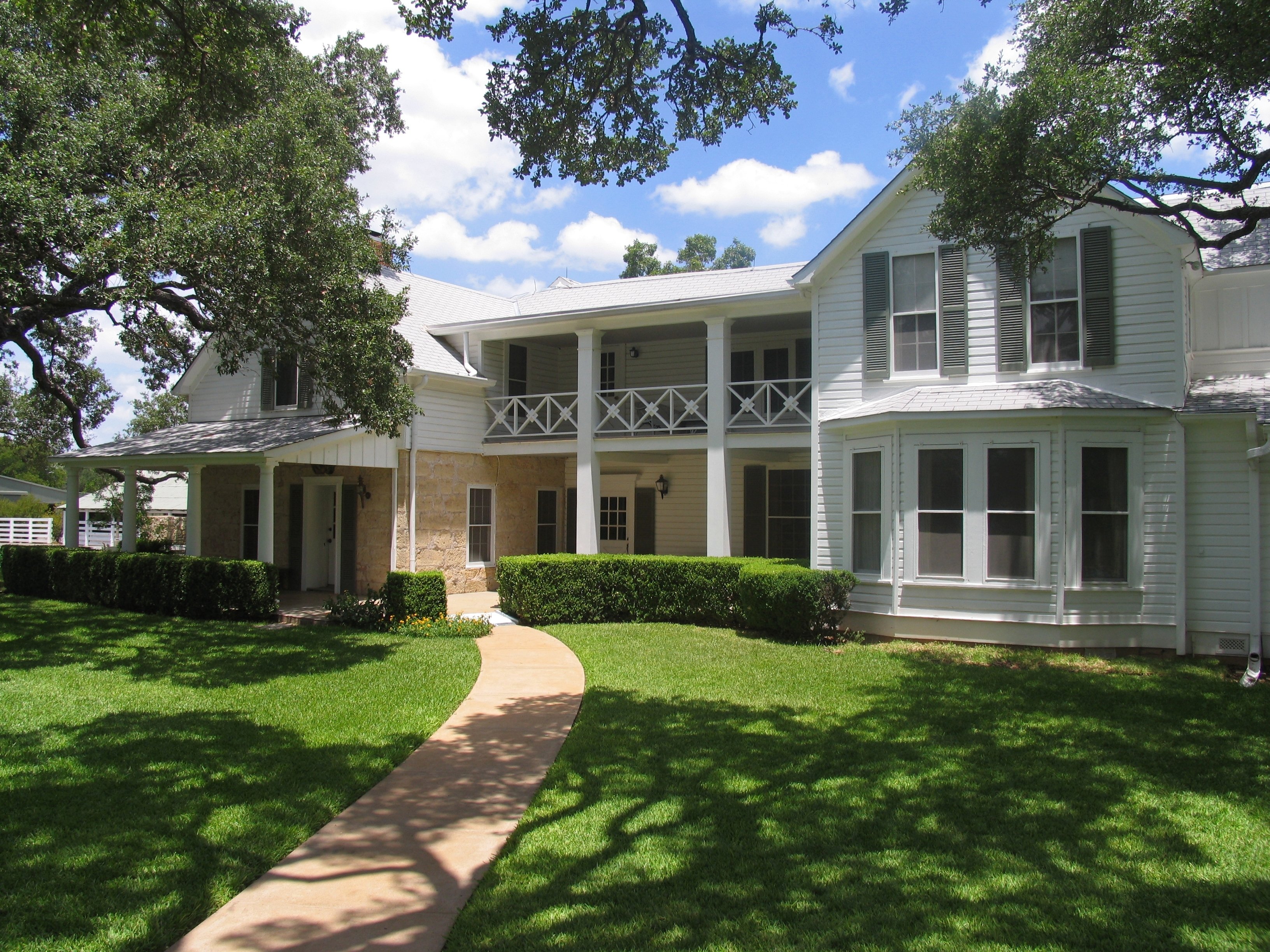
Preserving the story of America’s 36th President, Lyndon B. Johnson National Historical Park in Texas’ Hill Country enables visitors to tour the landscapes and buildings of Johnson’s ancestors, early life, political career, and retirement. From the Johnson Settlement, a cattle droving headquarters established by Johnson’s great-uncle, to the LBJ Ranch, also called the “Texas White House,” the park offers a unique “full circle” perspective on Johnson and the places from which he drew strength and comfort.
In a series of virtual tours from the park, you can explore the first floor of the Texas White House, the one-room schoolhouse where Johnson first attended class, and Johnson’s boyhood home, furnished as it would have looked during the 1920s. First time navigating a virtual tour? No problem – the park also has a primer video to help new users learn how to navigate virtual tours created with the Matterport tool. The park also has a series of educational videos on the history and importance of the site.
Shenandoah National Park
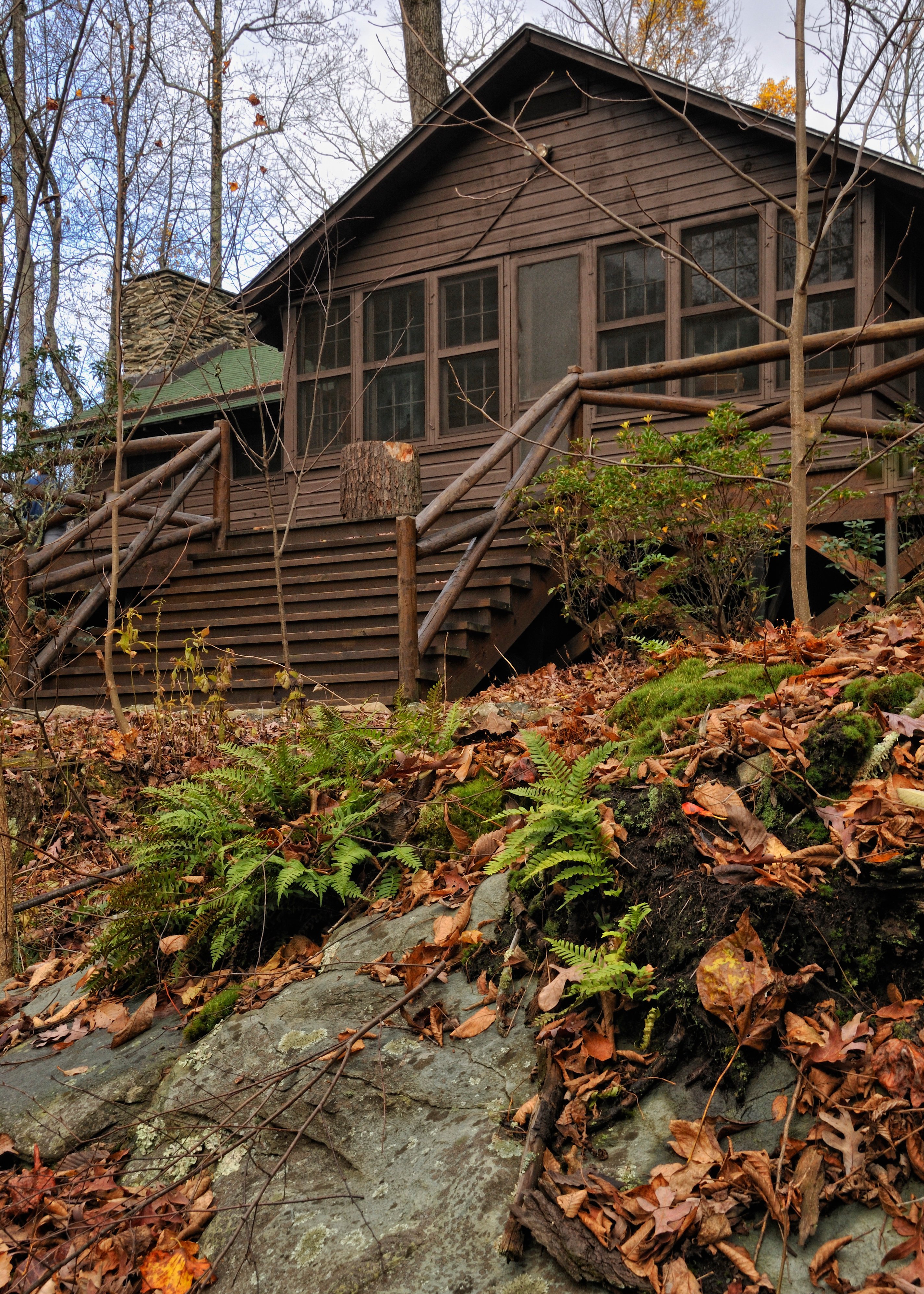
Shenandoah National Park protects over 200,000 acres of land, boasting waterfalls, stunning vistas, and more. While the park is renowned for its beauty and recreational opportunities, it also is rich with history and stories to share. The park protects many cabins and lodges that date back over 100 years – and over 300 of the park’s historical structures are listed on the National Register of Historic Places.
Shenandoah National Park offers a variety of virtual tours, including those of its visitor centers and some of these historic structures. Users can tour Massanutten Lodge, home to Addie Nairn Pollock, co-owner of the Skyland Resort, President Herbert Hoover’s cabin in historic Camp Rapidan, and cabins available to rent within the park along the Potomac Appalachian Trail. Even if you’ve visited the park before, there’s something new to discover.
Women's Rights National Historical Park
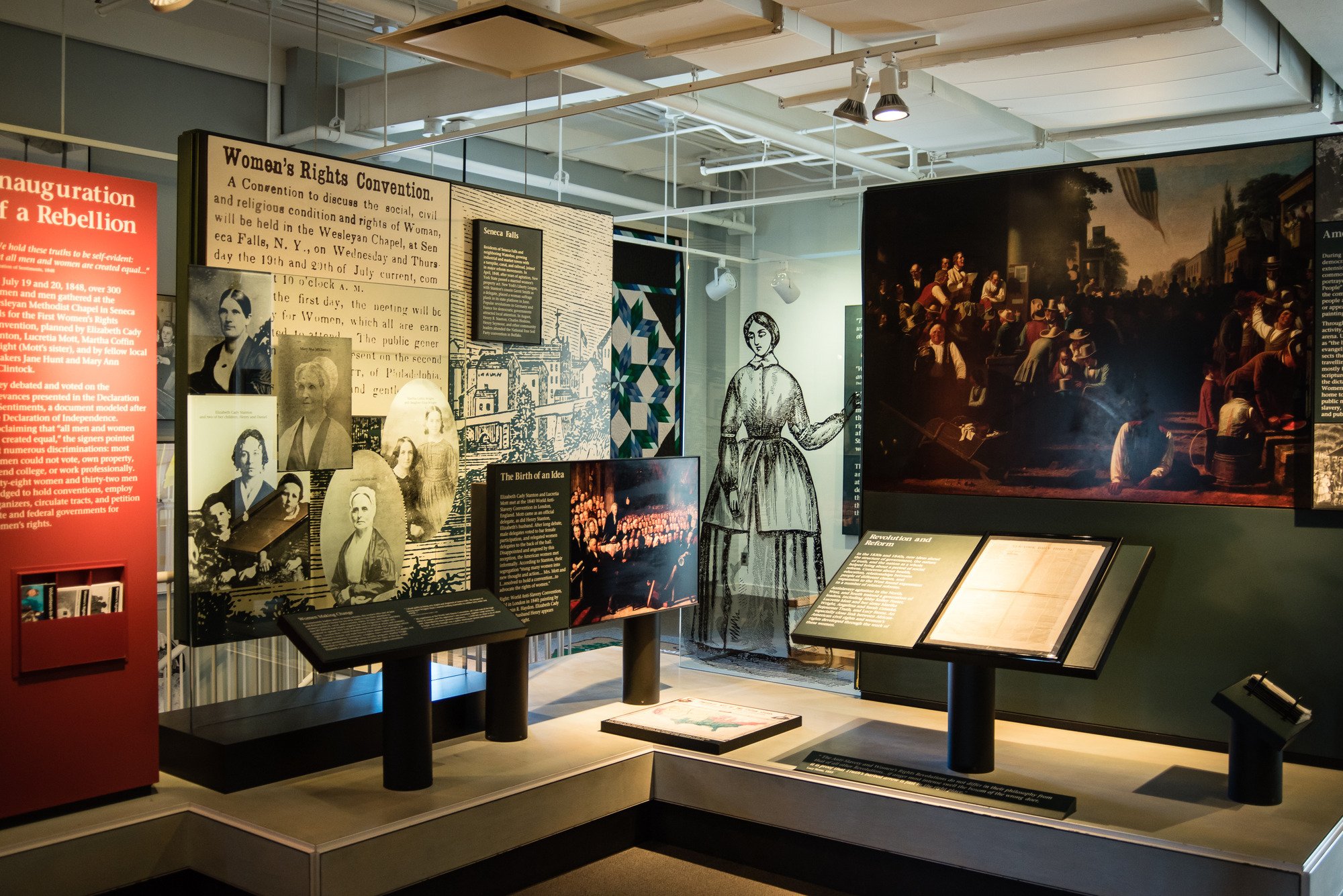
Preserving the site and stories around the first Women’s Rights Convention, held in Seneca Falls in July 1848, Women’s Rights National Historical Park offers visitors a glimpse into the historic homes – open seasonally – and landscapes that served as a backdrop for this historic event, as well as the Wesleyan Chapel where 300 people gathered to attend the convention. The park honors the beginning of the women’s suffrage movement, and those who lent their voice to the cause, including women’s rights leaders, abolitionists, and other 19th century reformers.
For those who may not be able to visit in person, the park offers interactive, 3D tours of a few of the historic sites, including Wesleyan Chapel and the park’s Visitor Center. Users can also explore Elizabeth Cady Stanton’s historic home and that of Mary Ann and Thomas M’Clintock - where the Declaration of Sentiments was penned.
Hamilton Grange National Memorial
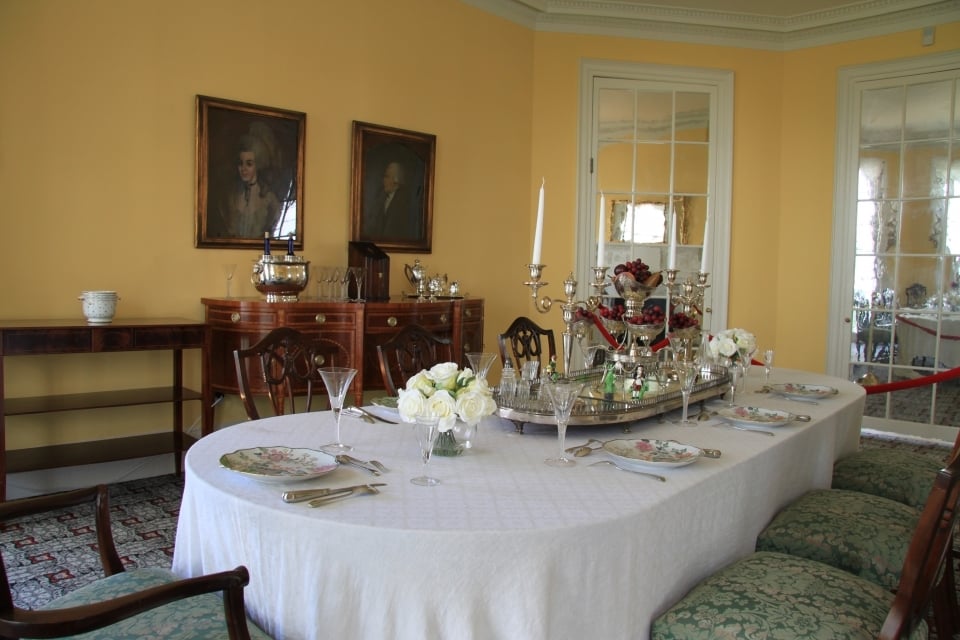
The final home of one of our nation’s founding fathers, Hamilton Grange National Memorial tells the story of Alexander Hamilton – from his humble beginnings as an orphan in the Caribbean to acting as the country’s first Secretary of the Treasury. Hamilton commissioned architect John McComb Jr. to design this home for an estate in upper Manhattan, and it was here that he lived the final years of his life.
Follow along with actor Jordan Fisher as he tours the house with Ranger Vlad in a video produced by the National Park Foundation and the National Park Service. Together they explore the rooms of Hamilton Grange, including the formal dining room Hamilton used to entertain guests and his personal study where he would read and write.
Crater Lake National Park
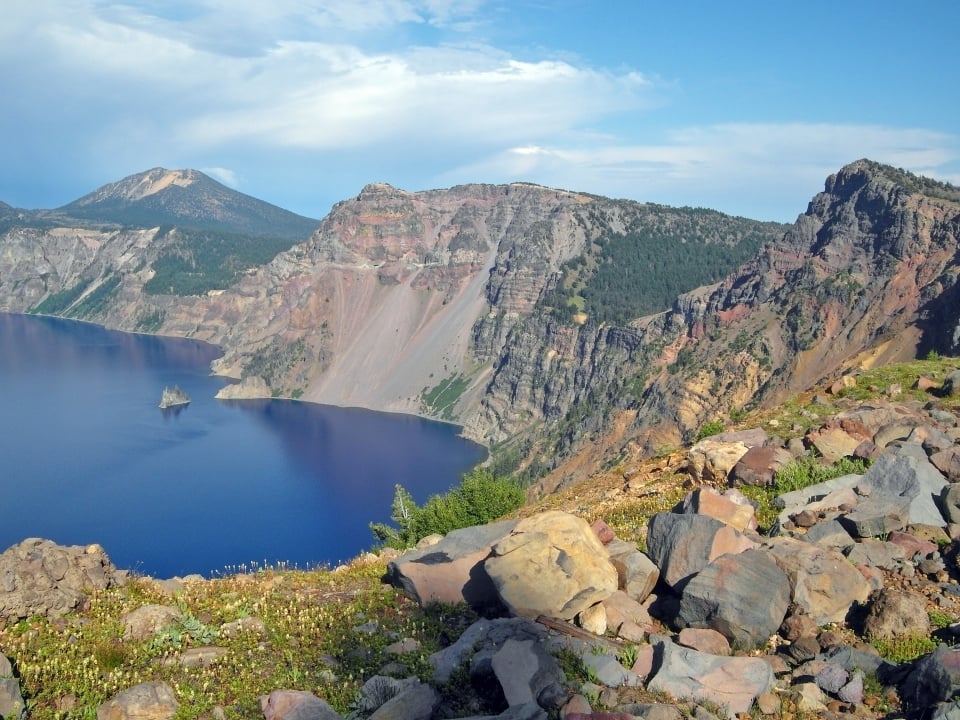
Formed by a volcanic eruption and collapse, Crater Lake National Park features the deepest lake in the U.S., and one of the top ten deepest lakes in the world. While people have inhabited the lake’s shores for centuries, the park was founded in 1902 to protect its natural resources, including its fresh, clear water, and cultural resources.
Go on a tour of the park with singer Dierks Bentley and park ranger Charlie in this 360-degree video produced by the National Park Foundation and the National Park Service. Catch the sunrise over Garfield Peak and cruise around Phantom Ship, a rock formation that predates the lake. Watch the video on a mobile device and move around to see the remarkable vistas of Crater Lake!
New Bedford Whaling National Historical Park
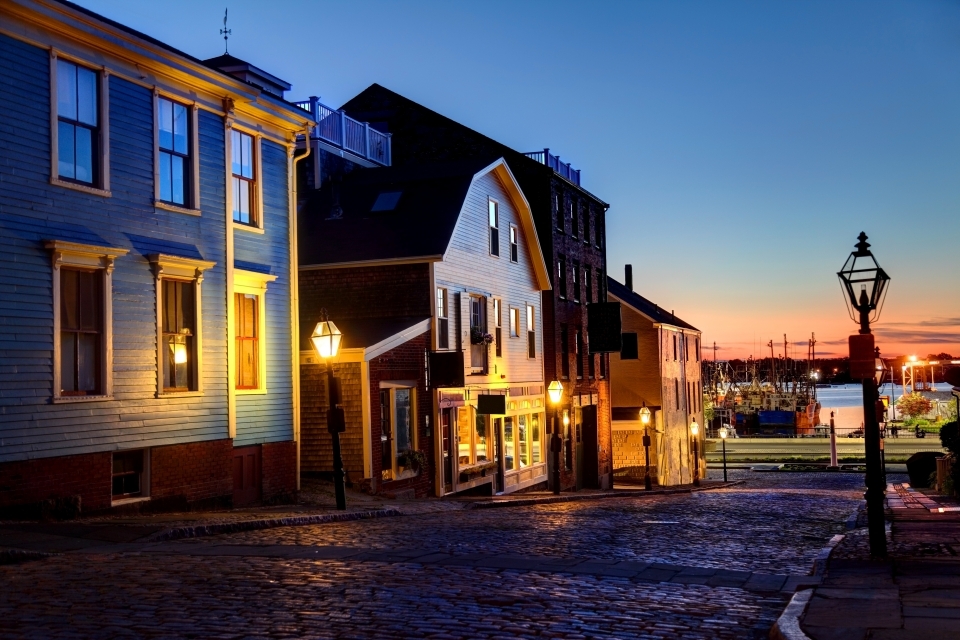
As the capital of the 19th century whaling industry and a safe haven along the Underground Railroad, as well as the home to figures such as Frederick Douglass and Herman Melville, New Bedford Whaling National Historical Park preserves, protects, and interprets cultural resources within the “city that lit the world.” Located in downtown New Bedford, Massachusetts, the park spans over 13 blocks, and includes a whaling museum, a waterfront visitor center, a custom house, and more.
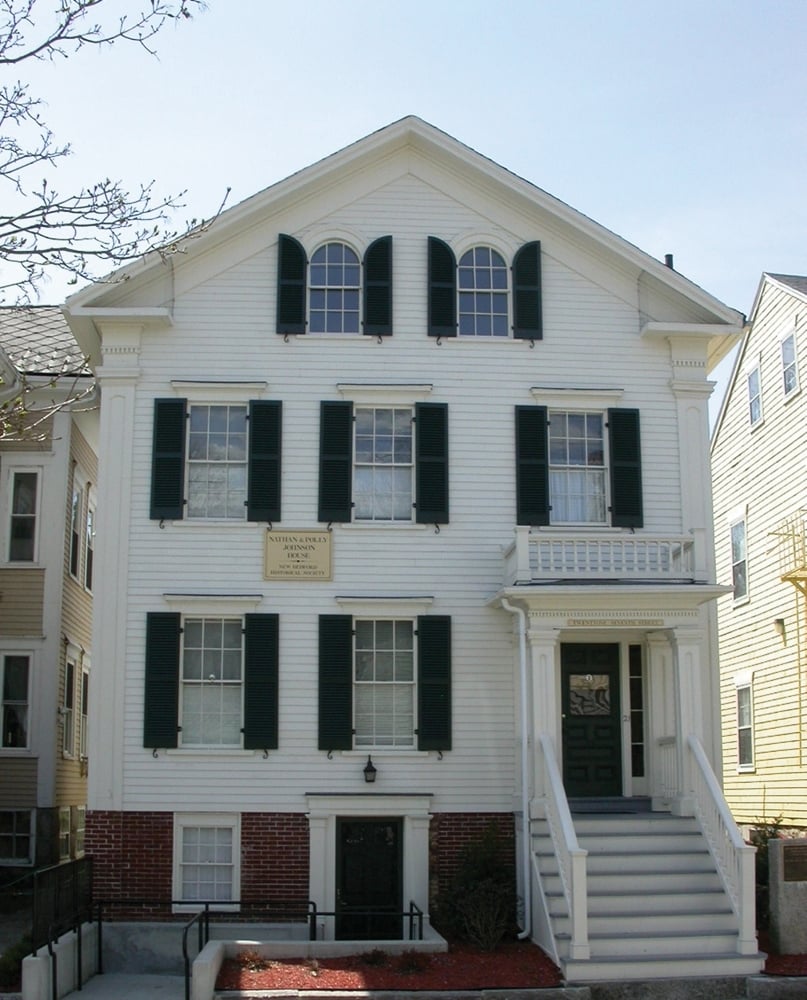
Take a video tour or interactive virtual tour of the Nathan and Polly Johnson House, not normally open to the public, provided by the National Park Service and the New Bedford Historical Society. Owned by Nathan and Mary "Polly" Johnson, the house welcomed and assisted those traveling along the Underground Railroad. The house was even the first residence of Frederick Douglass after his escape from slavery in 1838.
In 2016, NPF’s transportation grants program helped the park grow its partnership with New Bedford Public Schools, supporting the transportation of local 4th grade students to the park on educational visits. Students visiting the park were able to participate in student programs that explored the lives of people connected to the park’s history, such as Nathan and Polly Johnson and Lewis Temple, the inventor of the toggle harpoon.
Live Webcams
Make your escape to a scenic vista in a national park with a live webcam. Search for wildlife or sit back and enjoy the beauty of our national parks and the landscapes they preserve.
National Mall and Memorial Parks
A tradition in our nation’s capital for over 100 years, the annual blossoming of the cherry trees on the National Mall and Memorial Parks is a reminder of the beauty of spring. Plantings of cherry trees began in 1912 as a gift of friendship to the People of the United States from the People of Japan. Equated with the evanescence of human life, the beauty of the pale blossoms epitomizes the transformation of Japanese culture throughout the ages.
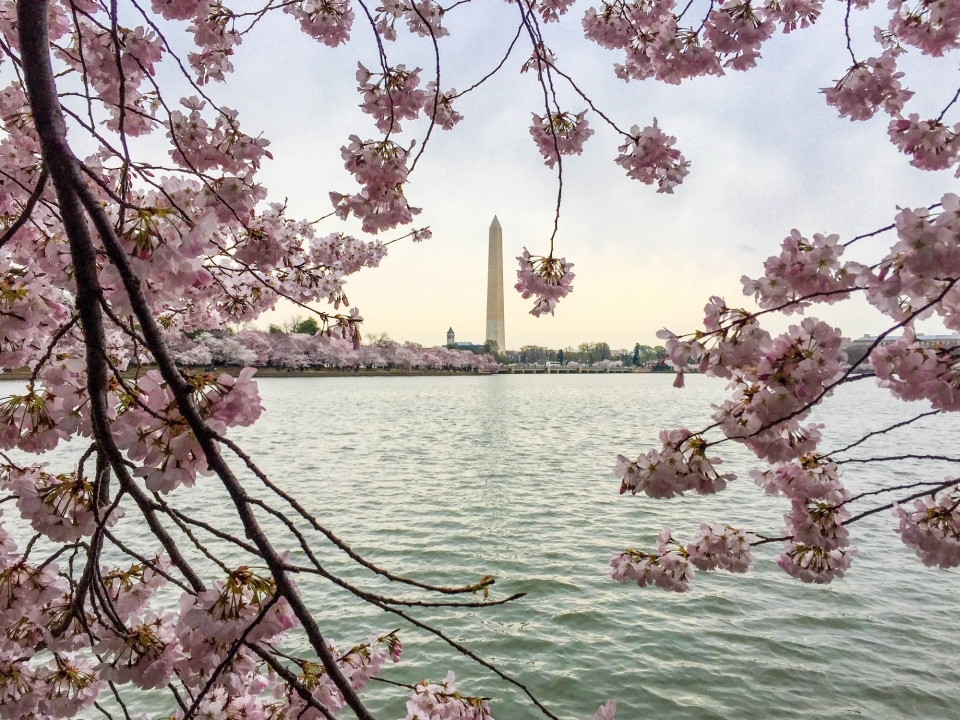
This webcam from the Trust for the National Mall, EarthCam, the National Park Service, and The National Cherry Blossom Festival brings the cherished and beloved cherry trees to you, wherever you are. Each year, the Bloom Cam allows you to peer out at D.C.’s Tidal Basin, including the Thomas Jefferson Memorial, the Martin Luther King, Jr. Memorial, and the Washington Monument. The live camera will change views every five minutes so you can enjoy these blooms from every angle.
NPF has supported many projects along the National Mall, including enhancing the monuments that serve as a backdrop for these iconic cherry blossoms every year. Since 2009, NPF has supported recycling efforts along the National Mall. In 2019, thanks to contributions to NPF from David Rubenstein and Musco Lighting, the Washington Monument installed updated lighting and a refurbished elevator system. In 2020, NPF announced a gift from Rubenstein that will enable the creation of a state-of-the-art museum and enhanced visitor experience at the Thomas Jefferson Memorial, and with the support of Rubenstein and others, NPF is helping to fund a new immersive museum and transformational improvements at the Lincoln Memorial.
Paterson Great Falls National Historical Park
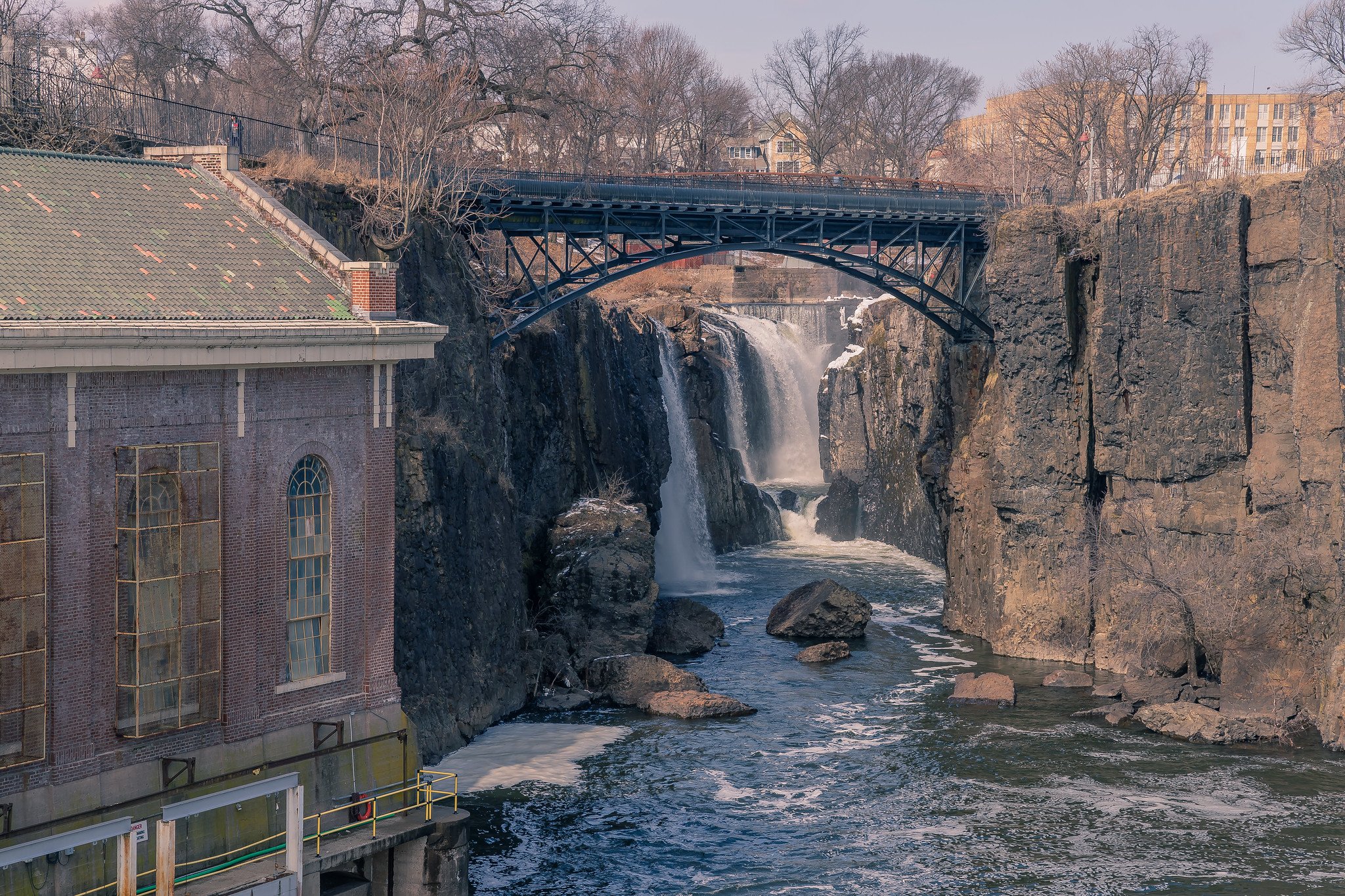
Established in 1792, Paterson, New Jersey was a planned industrial city from the minds of Alexander Hamilton and the “Society for Establishing Usefull Manufacturers.” Humble mills along the Passaic River manufactured cotton, silk, steam locomotives, rolls of paper, and even airplane engines. The Great Falls at Paterson Great Falls National Historical Park are central to the park’s story – their impressive power was the inspiration for Hamilton to establish the city in this spot.
Just as the falls inspired Hamilton, so too have they continued to inspire artists of all kinds, from visual arts to poetry and dance. NPF has supported cultural projects in the park, including Hamilton Partnership for Paterson’s 2016 “Taste of Paterson” block party, celebrating Paterson’s past, present, and future as a multicultural city of immigrants, a 2017 Native American Heritage festival, and a 2019 hip hop program.
Get a glimpse of the Great Falls with a live webcam presented by EarthCam, the National Park Service, and the City of Paterson. Revel in the majesty of these remarkable falls and the surrounding town that fostered the American Industrial Revolution, changing the face of America forever.
Channel Islands National Park
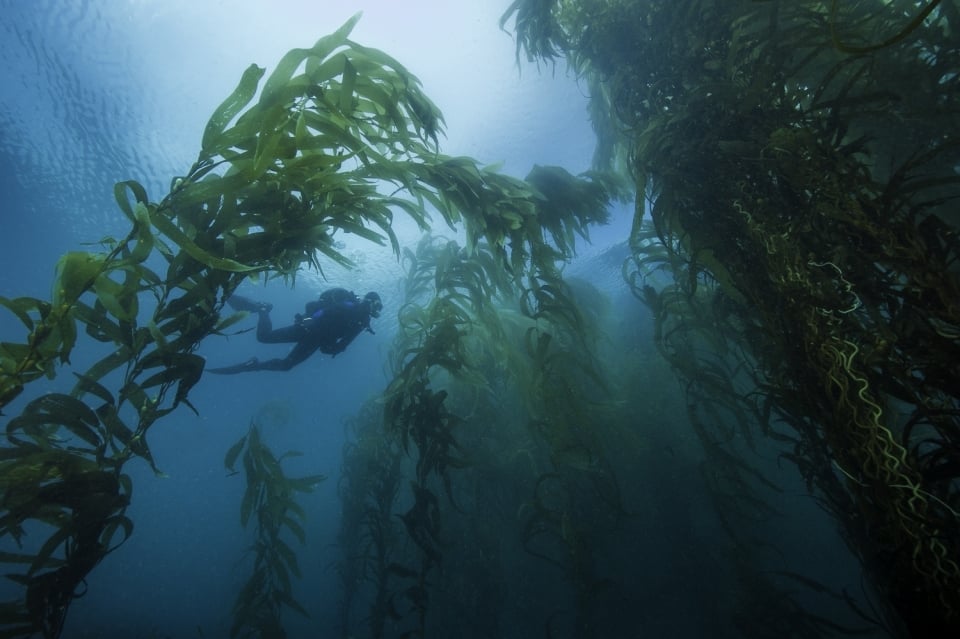
Dive into the rich marine life at Channel Islands National Park. Close to California’s southern coast and encompassing five different islands and their ocean environment, the park preserves and protects a variety of natural and cultural resources. The islands’ remote location is home to unique animals, plants, and archeological resources found nowhere else on Earth.
Go under the sea with the park’s live ocean webcam, presented in partnership between the National Park Service, Explore.org, and the Ventura County Office of Education, set up in the landing cove on Anacapa Island. See how many different marine species you can spot – there are nearly one thousand documented so far!
Statue of Liberty National Monument
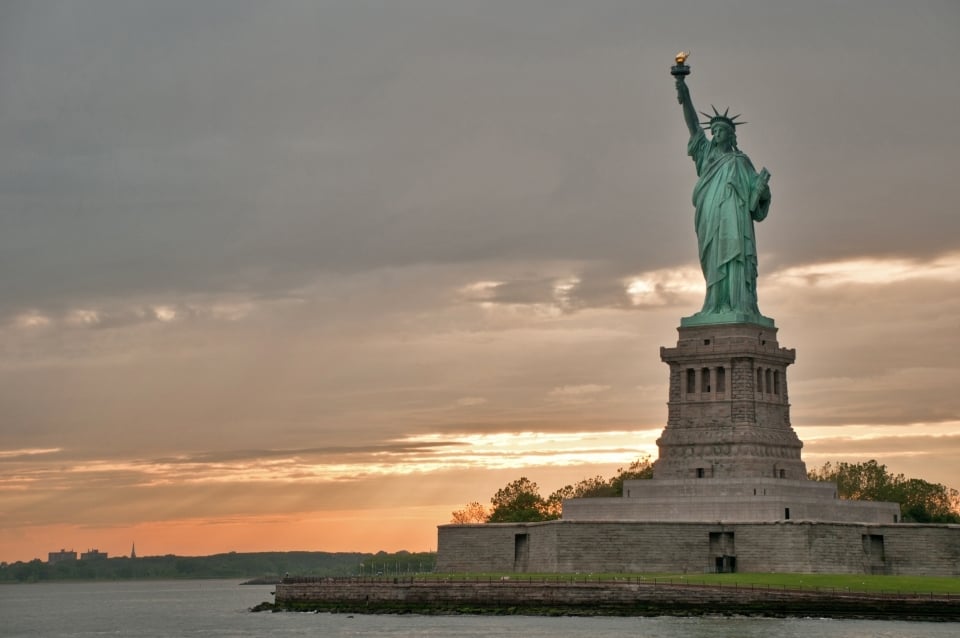
A gift from the people of France to the U.S., Statue of Liberty National Monument is recognized globally as a symbol of freedom and democracy. A welcoming figure for the millions of immigrants who entered the United States through New York between 1886 and 1924, the Statue was immortalized in Emma Lazarus’ poem “The New Colossus,” later engraved on a bronze plaque affixed to the base of the statue. First illuminated in 1916, the National Park Service has been caring for this iconic landmark since 1933.
Check in with Lady Liberty on a live webcam from EarthCam, the National Park Service, and the Statue of Liberty - Ellis Island Foundation. Enjoy a live look at the New York City skyline, as well as views of the Hudson River and ships in New York Harbor. Plus, users can take a virtual tour of the Statue of Liberty through immersive 360° panoramic photographs taken by NPS.
Yellowstone National Park
Watching Old Faithful Geyser erupt is one of Yellowstone National Park’s most treasured traditions. However, Old Faithful is just one of nearly 500 active geysers in the park, and one of six that park rangers currently predict. While the park is also famous for its scenery and wildlife, its unique and dynamic geothermal features were what inspired its designation as the first established national park in the world.
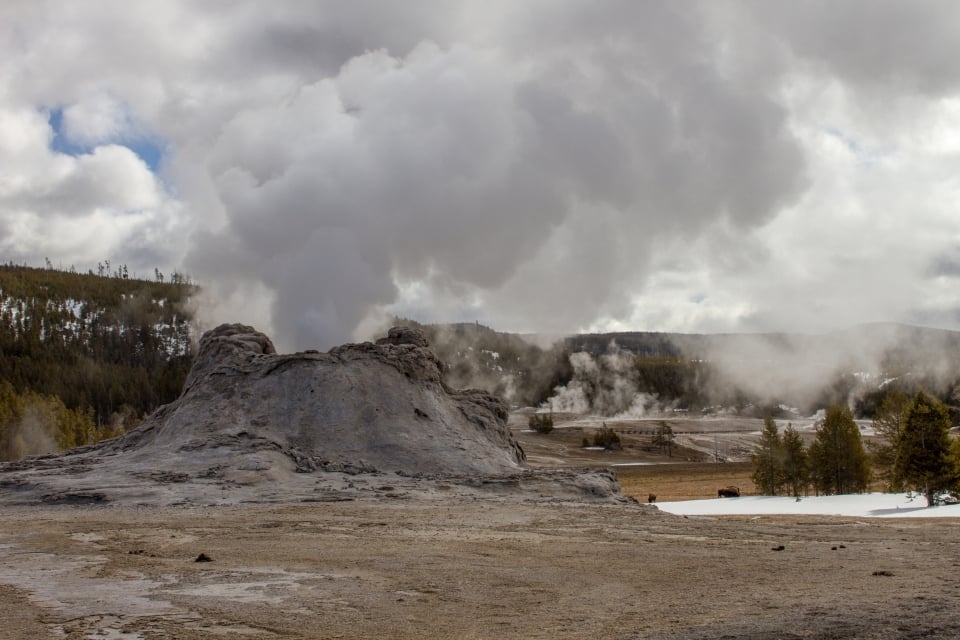
Explore Yellowstone’s nine webcams – one live-streaming and eight static – provided by Canon USA, Inc. through a grant to Yellowstone Forever. Take a closer look at a few of the park’s geysers, including Lone Star, Old Faithful, and Castle Geysers, through an overview of the Geyser Basin and 3-D models. Additionally, walk along some of Yellowstone’s paths with video walks provided by the park, offering virtual visitors a glimpse at some of the park’s main attractions.
NPF is a long-standing supporter of projects in Yellowstone National Park. From the reintroduction of wolves and restoration of native cutthroat trout in Yellowstone Lake to vital training for backcountry rangers, NPF has helped preserve the iconic park’s landscape and the wildlife populations that call it home, as well as enhance the experience of the many visitors who take a trip to the park.
Katmai National Park & Preserve
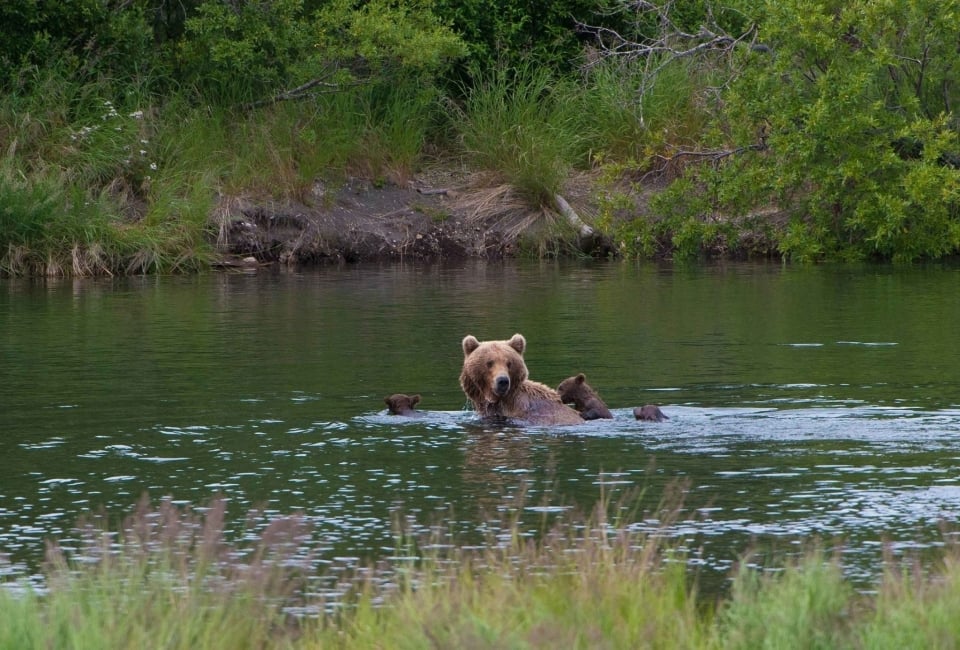
Established in 1918 to preserve features associated with one of the most powerful volcanic eruptions ever recorded, Katmai National Park and Preserve protects thousands of years of human history. The park’s millions of acres serve as an important protected habitat for salmon and thousands of brown bears, which can be seen in high concentrations across the park.
Explore the park’s three bear webcams, presented in partnership with Explore.org. Bear cams go live each summer when the park’s bears are most active, but you can catch highlight reels from the bear cams year-round. Search for bears fishing for salmon at Brooks Falls and the Riffles, plus catch mothers and cubs on the Lower River cam. You may even catch a snorkeling bear from the River Watch cam, which provides a closer view of Brooks River.
More to Explore
Check out the National Park Service’s multimedia gallery of webcams to experience other parks live, or earn an online Junior Ranger badge from a park. Discover other ways to enjoy parks at home, or even take a peek at our Parkcade for fun, educational park activities for the whole family.